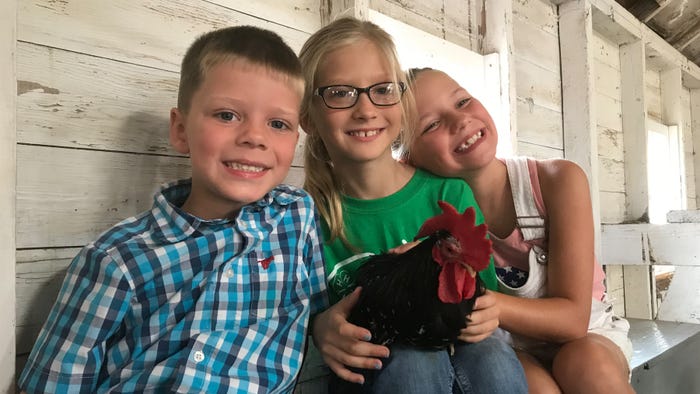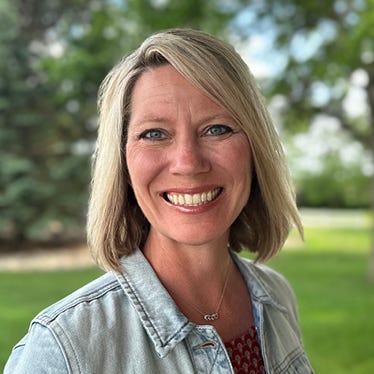June 30, 2023

Photo by Holly Wortmann
Each year, Nebraskans mark their calendars for the county fair. Many plan vacations during that special week of the summer. However, the behind-the-scenes work of organizing the fair starts well before the gates open.
Amanda Mogensen grew up spending every August at the Seward County Fair in Seward, Neb. “I had the opportunity to work with the Seward County Ag Society when I was completing my 4-H Diamond Clover Project, and it sparked my interest in what happens out of the public view,” she recalls.
After moving to Boone County, Mogensen volunteered at the Boone County Fair, held each year in Albion, Neb., in July. In 2017, at age 26, Mogensen was voted to the Boone County Ag Society board, where she serves as secretary/treasurer and is a member of the sponsorship and fair concert committees.
Mogensen understands the year-round organizational framework for putting on a successful county fair. “The board takes a breather the week after the fair,” she explains. “Then in August, we start planning again — discussing what went well, potential improvements, maintenance projects.”
Building relationships
The ticket to successful county fairs is building relationships. “Relationships with the Extension office, 4-H Council, county commissioners, fair sponsors and the people within each of our communities is important,” Mogensen says. “Without the support of everyone, we would not be successful. The team around the table on the third Monday of every month is the most important. Each director has a purpose, and everyone has to play their part in order for us to pull off the county fair.”
A county fair is an occasion for communities to celebrate the work of others and maybe discover something new.
“A fair can be a strong bridge when it comes to the rural-versus-urban divide,” Mogensen says. “It provides opportunities for youth and adults alike to see hands-on how livestock is handled, cared for and have direct conversations with the producers. I love to visit other county fairs. Now, imagine someone that has never been to Nebraska before. What do you want them to take away from your fair? How are you representing your county?”
Static exhibits offer a wide variety of items from produce to photography, quilts and more. “One of my favorite parts of the fair are the youth exhibits,” Mogensen says. “What a neat way to connect future leaders with community leaders. There could be a business owner walking through the exhibit hall and come across someone’s work — an instant connection with a local youth that may want a job in that industry or have an interest in trying it out. It really is a big networking opportunity for many.”
Effect on local towns
Many communities feel the positive effect the county fairs have on the local economy. The annual event brings business to restaurants, hotels and gas stations. “The church serves lunch in the dining hall, and there is a selection of food trucks. Both areas are packed daily,” Mogensen says of the Boone County Fair. “The positive economic results are one of the things I hear from the public the most.”
Mogensen says one of the biggest challenges to planning a county fair is finding volunteers and the next leaders. “I believe there is a concern from the older generation that the younger generation won’t serve,” she says. “We need to reassure the older generation that we care about the success of the fair, and how we work together to accomplish that.”
Mogensen’s advice to overcome these challenges is to use the resources in your area. “Work together and get to know your fellow board members and their strengths,” she says. “We need to set them up for success and ask ourselves how we are preparing future leaders. You want someone around that table from every town. Come with a purpose, structure, plan — and stick with it.
“County fairs provide an opportunity for the next generation of agricultural leaders to share their stories,” Mogensen adds. “It shows the public that Nebraska family farms will be around for generations to come, and we’re in good hands. I try to keep that in mind when planning the next year’s fair. It's exhausting, but it is important to me that we leave a strong foundation for the generations to come.”
Each January, the Nebraska Association of Fair Managers holds the state convention. “The county fair is a big load for civilians and volunteers,” Mogensen says. “Through NAFM, we network with other boards and help each other out because we are all doing something similar across the state.”
The Boone County Fair in Albion this year is scheduled for July 8-12. You can see a complete listing of all county fairs in Nebraska with tentative dates by going online or in the July print issue of Nebraska Farmer.
Wortmann writes from Crofton, Neb.
About the Author(s)
You May Also Like






